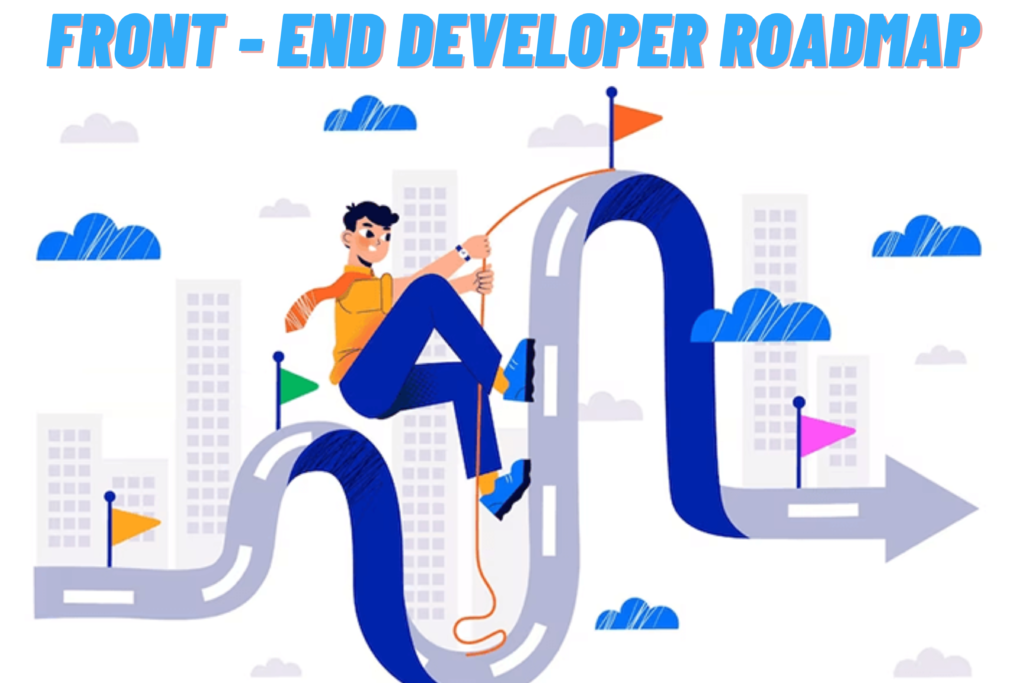Front End Development is an exhilarating field that empowers developers to create captivating user experiences and shape the visual identity of the web. From designing stunning interfaces to crafting interactive websites, Front End Development plays a pivotal role in shaping the digital landscape.
Whether you’re a beginner taking your first steps into the world of coding or an experienced developer looking to enhance your skills, this comprehensive guide will serve as your roadmap to becoming a proficient Front End Developer. We will delve deep into each aspect of Front End Development, providing detailed explanations, real-world examples, and practical applications to help you unlock the secrets to mastery.
Why we need Front End Development:
Front End Development is of paramount importance in the world of web development and plays a critical role in creating a positive user experience and shaping the visual identity of a website. Here are several reasons why Front End Development is essential:
- User Experience (UX): The Front End is the first point of contact for users when they visit a website. A well-designed and user-friendly Front End is crucial for providing an intuitive and enjoyable user experience. Smooth navigation, clear layouts, and responsive design enhance user satisfaction and keep visitors engaged.
- Visual Appeal: Front End Development is responsible for the visual aesthetics of a website. Eye-catching designs and appealing layouts capture users’ attention and make a lasting impression. By focusing on aesthetics and design elements, Front End Developers can create websites that stand out and leave a positive impact on visitors.
- Accessibility & Inclusivity: Front End Developers play a vital role in ensuring that websites are accessible to all users, regardless of their abilities or disabilities. By implementing Web Accessibility (A11y) principles, Front End Developers make sure that websites can be easily navigated and used by everyone, including those using assistive technologies.
- Interactivity & Dynamic Content: Front End Development enables the integration of interactive elements and dynamic content on websites. From sliders and animations to real-time updates, Front End Developers bring websites to life, enhancing user engagement and creating a more immersive experience.
- Cross-Browser Compatibility: Websites need to function consistently across different web browsers and platforms. Front End Developers ensure that the design and functionality of a website work seamlessly on various browsers, such as Chrome, Firefox, Safari, and Edge, providing a consistent experience to all users.

As we have discussed why we need Front End Development let’s begin with our roadmap.
HTML & CSS Fundamentals:
HTML (Hypertext Markup Language) and CSS (Cascading Style Sheets) are the building blocks of every web page. Understanding these fundamental languages is essential for every Front-End Developer.
a. HTML Basics:
HTML provides the structure and content of web pages. Start by understanding the basic structure of an HTML document, including the doctype declaration, head, and body tags. Learn about essential HTML elements such as headings, paragraphs, lists, and links. Get familiar with semantic HTML, which helps search engines and assistive technologies better understand the content.
b. CSS Styling:
CSS brings life to HTML elements by providing visual styles. Learn CSS selectors to target specific HTML elements and apply styles. Explore properties like font-size, color, background, padding, margin, and more to design visually appealing layouts. Understand the box model, which dictates how elements are rendered on the page.
c. Responsive Design:
In today’s multi-device world, responsive design is crucial. Learn about media queries, which allow you to create different styles for different screen sizes. Embrace Flexbox and Grid layouts to create flexible and fluid page structures that adapt seamlessly to various devices.
JavaScript Proficiency:
JavaScript is the scripting language that enables interactivity and dynamic functionality on web pages.
a. Data Types & Variables:
Understand JavaScript’s data types, including numbers, strings, booleans, arrays, and objects. Learn how to declare and use variables to store and manipulate data.
b. Control Structures & Functions:
Control structures like if/else statements and loops (for, while) help control the flow of your code. Master the use of functions to organize code into reusable blocks and improve code maintainability.
c. DOM Manipulation:
The Document Object Model (DOM) represents the structure of a webpage in the browser. Learn how to manipulate the DOM using JavaScript to dynamically update content, create interactive elements, and respond to user interactions.
Front End Frameworks:
Front End frameworks like React, Angular, and Vue.js have become immensely popular for building complex and feature-rich web applications.
a. Introduction to Frameworks:
Understand the role of Front End frameworks and their benefits. Compare and contrast React, Angular, and Vue.js to choose the one that best fits your project’s needs.
b. Setting Up a Project:
Learn how to set up a new project using your chosen Front End framework. Explore the tools and libraries required for development and build configurations.
c. Components & State Management:
Components are the building blocks of Front End frameworks. Learn how to create and compose reusable components that encapsulate functionality and UI. Understand state management, which enables data flow and reactivity within components.
Responsive Web Design:
Responsive Web Design ensures that websites look great and function well on various devices with different screen sizes.
a. Media Queries:
Media queries allow you to apply different CSS styles based on the user’s device and screen size. Learn how to use media queries to create responsive layouts that adapt to mobile, tablet, and desktop screens.
b. Flexbox & Grid Layouts:
Flexbox and Grid are CSS layout systems that provide powerful tools for designing responsive and flexible page structures. Explore Flexbox for one-dimensional layouts and Grid for two-dimensional layouts.
c. Responsive Images & Media:
Images and media can significantly impact page load times. Learn about responsive image techniques like srcset and sizes attributes, which allow the browser to select the appropriate image size based on the device’s screen size.
Version Control with Git:
Git is a distributed version control system that allows developers to track changes to code over time and collaborate with others.
a. Understanding Version Control:
Learn the fundamentals of version control, including the concepts of repositories, commits, branches, and merging. Understand the benefits of using version control in team development.
b. Setting Up Git & Repositories:
Install and set up Git on your local machine. Create a new repository to start tracking changes in your project.
c. Branching & Merging:
Branching allows you to create separate lines of development without affecting the main codebase. Learn how to create branches, make changes, and merge them back into the main codebase.
d. Collaboration with Remote Repositories:
Explore hosting services like GitHub or GitLab to collaborate with other developers. Learn how to push and pull changes from remote repositories and resolve conflicts when multiple developers work on the same code.
Performance Optimization:
Optimizing Front End performance is crucial for delivering a fast and smooth user experience.
a. Performance Measurement:
Use tools like Lighthouse, WebPageTest, and Google PageSpeed Insights to analyze the performance of your website. Understand metrics like First Contentful Paint (FCP), Largest Contentful Paint (LCP), Time to Interactive (TTI), and Cumulative Layout Shift (CLS).
b. Minification & Compression:
Minify CSS, JavaScript, and HTML files to reduce their size and improve page load times. Enable compression on the server to send compressed files to the browser.
c. Lazy Loading & Resource Optimization:
Implement lazy loading for images and resources to load them only when they come into the viewport. Optimize image formats and sizes to reduce their impact on page load.
Web Accessibility (A11y):
Web Accessibility ensures that websites are usable and accessible to people with disabilities.
a. Understanding A11y & Its Impact:
Learn about different types of disabilities and how they can impact web usage. Understand the importance of making websites accessible to all users.
b. ARIA Roles & Attributes:
Learn about Accessible Rich Internet Applications (ARIA) roles and attributes. Use ARIA to enhance the accessibility of interactive components like menus, modals, and form elements.
c. Testing for Accessibility:
Use tools like Lighthouse and WAVE to audit your website for accessibility issues. Test your website using screen readers and keyboard navigation to ensure it is usable for all users.
CSS Preprocessors & Build Tools:
CSS preprocessors like Sass and Less enhance CSS authoring, while build tools like Webpack automate tasks and optimize Front End development.
a. CSS Preprocessors:
Understand the advantages of using CSS preprocessors like Sass or Less. Learn how to set up a preprocessor in your project and use features like variables, mixins, and nesting to write more efficient and maintainable CSS.
b. Working with Webpack:
Explore Webpack, a powerful build tool that automates tasks like bundling, minification, and transpilation. Configure Webpack for your Front End project to streamline development and optimize performance.
Web Design Principles:
Creating visually appealing and intuitive interfaces is crucial for a delightful user experience.
a. User-Centered Design (UCD):
Understand the principles of User-Centered Design (UCD) and the user-centered design process. Learn about user personas, user journeys, and wireframes as essential components of UCD.
b. Typography & Color Theory:
Typography and color play a significant role in shaping the visual appeal of your website. Explore the principles of typography, such as font pairing, line-height, and letter-spacing, to create harmonious and readable text. Understand color theory and the psychological impact of colors on user perception to design visually engaging interfaces.
c. Mobile-First Design:
With the increasing prevalence of mobile users, adopting a mobile-first approach to design is crucial. Learn how to prioritize content and design for smaller screens first, and then progressively enhance the layout for larger devices.
d. Animation & Interaction:
Add life to your interfaces through animations and interactions. Explore CSS animations, transitions, and keyframes to create subtle and engaging visual effects. Discover JavaScript libraries like GreenSock (GSAP) or Anime.js to take animations to the next level.
Testing & Debugging:
Testing and debugging are essential skills for identifying and fixing issues in your Front-End code.
a. Unit Testing with Jest:
Writing unit tests helps ensure that individual components of your application work as expected. Explore Jest, a popular testing framework for JavaScript, to write and run unit tests.
b. Debugging Techniques:
Debugging is a critical aspect of development. Learn how to use browser Developer Tools to inspect and debug your code. Explore breakpoints, watch expressions, and stack traces to pinpoint and fix issues effectively.
c. Cross-Browser Testing:
Ensure that your website works correctly across different browsers and platforms. Use tools like BrowserStack or CrossBrowserTesting to test your website on various browsers and devices.
d. Error Handling & Exceptions:
Handling errors gracefully is essential for providing a smooth user experience. Learn about try-catch blocks and error handling techniques to prevent your application from breaking due to unexpected errors.
Front End Performance & SEO:
Optimizing your Front End for performance and search engine visibility is critical for reaching a broader audience.
a. Performance Budgeting:
Set performance budgets to define the maximum acceptable load times and resource sizes for your website. Measure and monitor your website’s performance regularly to ensure it stays within the budget.
b. Asynchronous Loading & Prefetching:
Use asynchronous loading to load non-essential resources after the main content has rendered, reducing the initial load time. Implement prefetching to load resources needed for subsequent pages, enhancing the user experience.
c. Meta Tags & Structured Data:
Optimize meta tags like title, description, and Open Graph tags for search engine visibility and social media sharing. Implement structured data with Schema.org to provide context and enhance search results.
d. SEO Best Practices:
Understand Search Engine Optimization (SEO) principles to improve your website’s ranking in search engine results. Explore techniques like keyword research, backlink building, and content optimization to boost your website’s visibility.
Continuous Learning & Real-World Projects:
Continuous learning and practical projects are key to staying updated and showcasing your skills.
a. Online Resources & Courses:
Stay curious and keep learning from online tutorials, blogs, and courses. Explore platforms like Udemy, Coursera to deepen your knowledge and discover new Front-End technologies.
b. Contributing to Open Source:
Engage with the developer community and contribute to open-source projects. Collaborating on open-source projects not only helps you learn from experienced developers but also showcases your skills to potential employers.
c. Building an Impressive Portfolio:
Create a portfolio showcasing your Front-End projects. Include detailed explanations, code snippets, and links to live demos. A well-organized portfolio demonstrates your expertise and creativity to potential employers or clients.
d. Participating in Hackathons & Challenges:
Join hackathons and coding challenges to solve real-world problems and test your skills under pressure. These events offer valuable experience, help you build new projects, and connect with like-minded developers.
Conclusion:
Congratulations! You have completed the comprehensive roadmap for mastering Front End Development. From understanding HTML and CSS fundamentals to exploring JavaScript proficiency, Front End frameworks, and optimizing performance, you have equipped yourself with a diverse skill set.
Additionally, you have learned the importance of user-centric design, accessibility, and testing, as well as Front End performance and SEO best practices. Embrace continuous learning, stay updated with the latest Front-End trends, and immerse yourself in real-world projects to showcase your expertise.
As you embark on this transformative journey, remember that Front End Development is an ever-evolving field. Embrace the challenges, collaborate with the developer community, and celebrate each milestone on your path to mastery.
May your coding skills continue to evolve, inspire others, and shape the future of the web. Happy coding, and best of luck on your Front-End Development endeavors! 🚀💻
Join our coding community over telegram and LinkedIn where you can ask questions regarding your studies, job etc. Also we will be sharing free resources for you to grow.
Hope all your doubt Cleared after reading the whole Article Carefully. You can connect with us using the following links :
Important Links
| Join WhatsApp | Click Here |
| Join Telegram | Click Here |
| Join Twitter (X) | Click Here |
| Join Instagram | Click Here |



